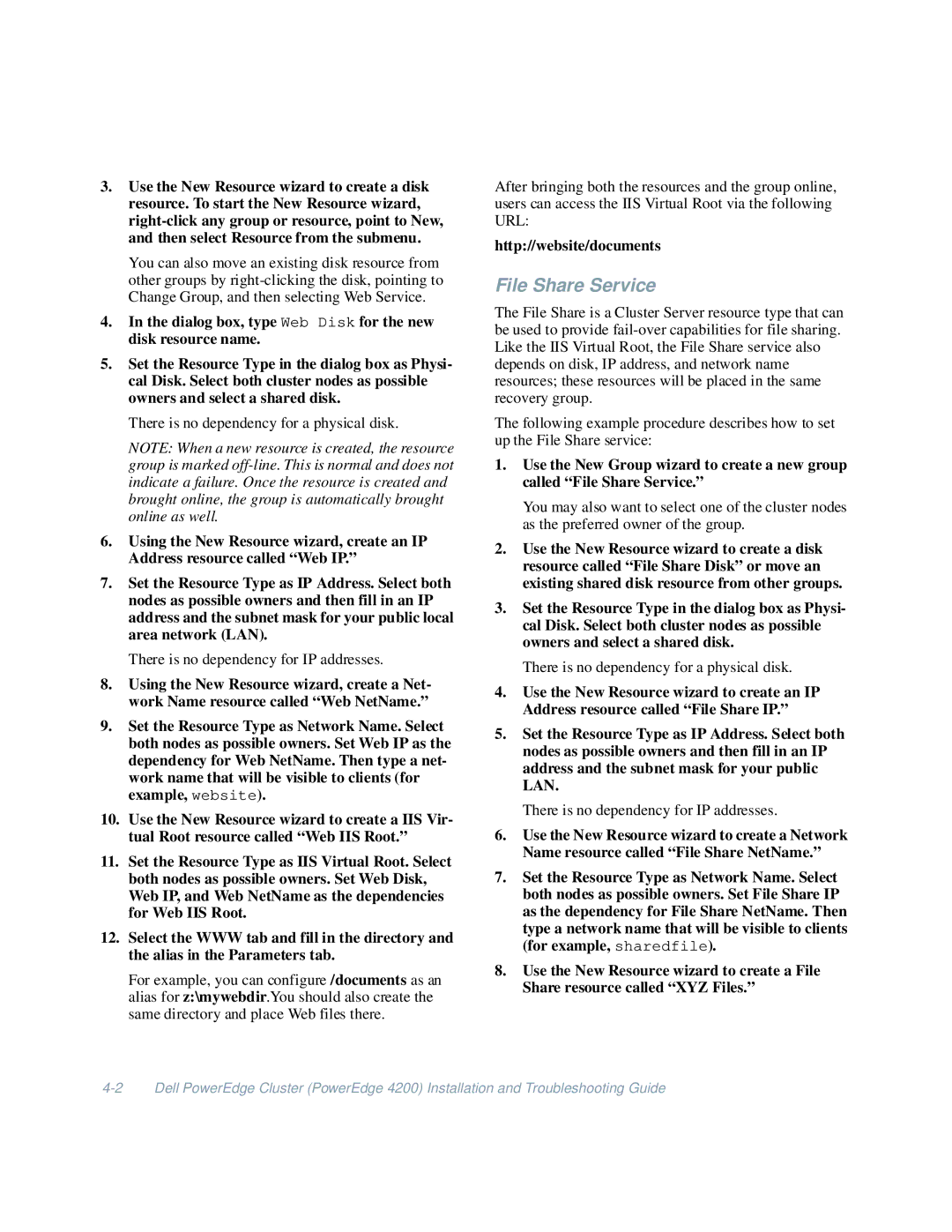3.Use the New Resource wizard to create a disk resource. To start the New Resource wizard,
You can also move an existing disk resource from other groups by
4.In the dialog box, type Web Disk for the new disk resource name.
5.Set the Resource Type in the dialog box as Physi- cal Disk. Select both cluster nodes as possible owners and select a shared disk.
There is no dependency for a physical disk.
NOTE: When a new resource is created, the resource group is marked
6.Using the New Resource wizard, create an IP Address resource called “Web IP.”
7.Set the Resource Type as IP Address. Select both nodes as possible owners and then fill in an IP address and the subnet mask for your public local area network (LAN).
There is no dependency for IP addresses.
8.Using the New Resource wizard, create a Net- work Name resource called “Web NetName.”
9.Set the Resource Type as Network Name. Select both nodes as possible owners. Set Web IP as the dependency for Web NetName. Then type a net- work name that will be visible to clients (for example, website).
10.Use the New Resource wizard to create a IIS Vir- tual Root resource called “Web IIS Root.”
11.Set the Resource Type as IIS Virtual Root. Select both nodes as possible owners. Set Web Disk, Web IP, and Web NetName as the dependencies for Web IIS Root.
12.Select the WWW tab and fill in the directory and the alias in the Parameters tab.
For example, you can configure /documents as an alias for z:\mywebdir.You should also create the same directory and place Web files there.
After bringing both the resources and the group online, users can access the IIS Virtual Root via the following URL:
http://website/documents
File Share Service
The File Share is a Cluster Server resource type that can be used to provide
The following example procedure describes how to set up the File Share service:
1.Use the New Group wizard to create a new group called “File Share Service.”
You may also want to select one of the cluster nodes as the preferred owner of the group.
2.Use the New Resource wizard to create a disk resource called “File Share Disk” or move an existing shared disk resource from other groups.
3.Set the Resource Type in the dialog box as Physi- cal Disk. Select both cluster nodes as possible owners and select a shared disk.
There is no dependency for a physical disk.
4.Use the New Resource wizard to create an IP Address resource called “File Share IP.”
5.Set the Resource Type as IP Address. Select both nodes as possible owners and then fill in an IP address and the subnet mask for your public LAN.
There is no dependency for IP addresses.
6.Use the New Resource wizard to create a Network Name resource called “File Share NetName.”
7.Set the Resource Type as Network Name. Select both nodes as possible owners. Set File Share IP as the dependency for File Share NetName. Then type a network name that will be visible to clients (for example, sharedfile).
8.Use the New Resource wizard to create a File Share resource called “XYZ Files.”
